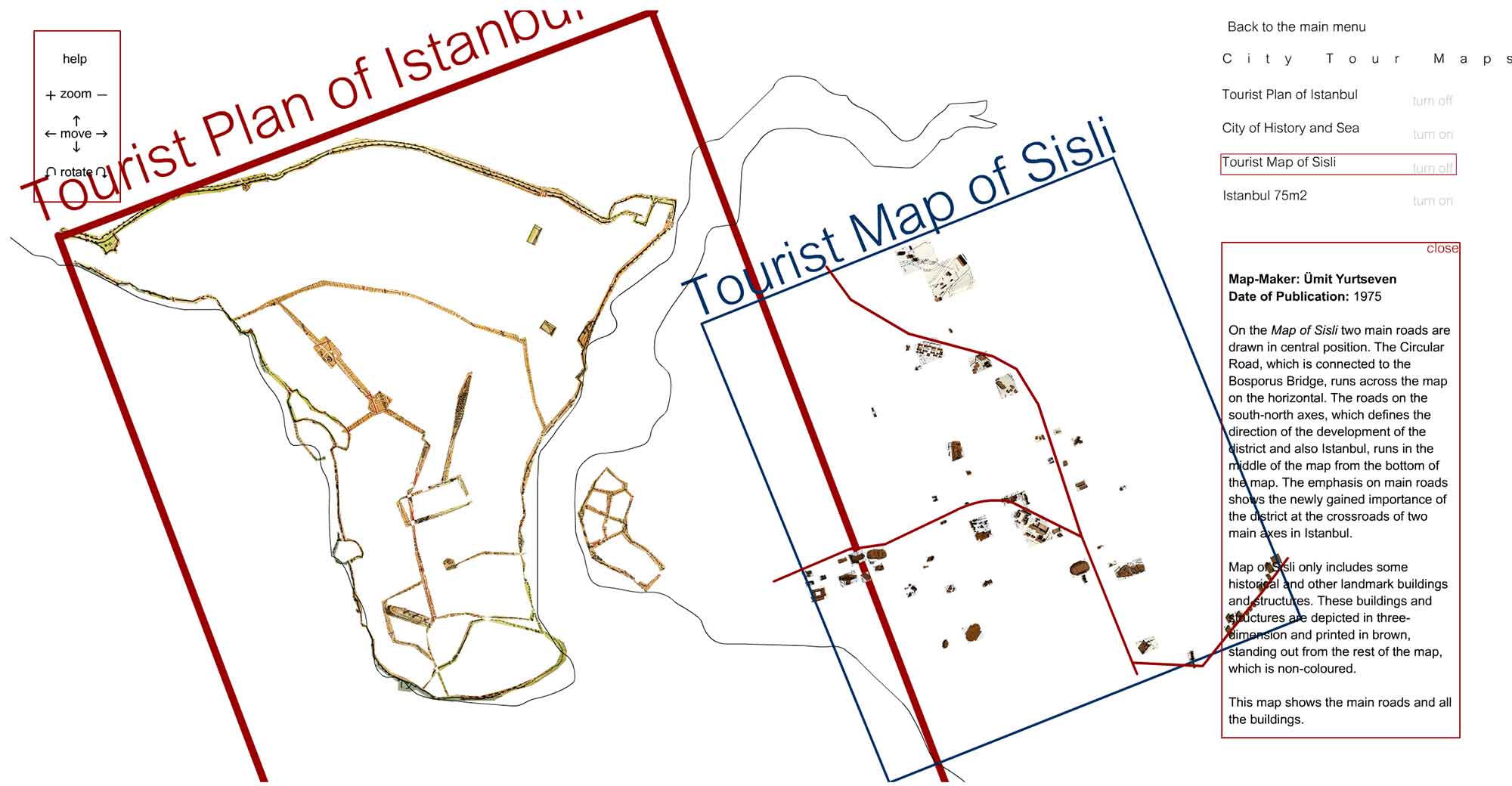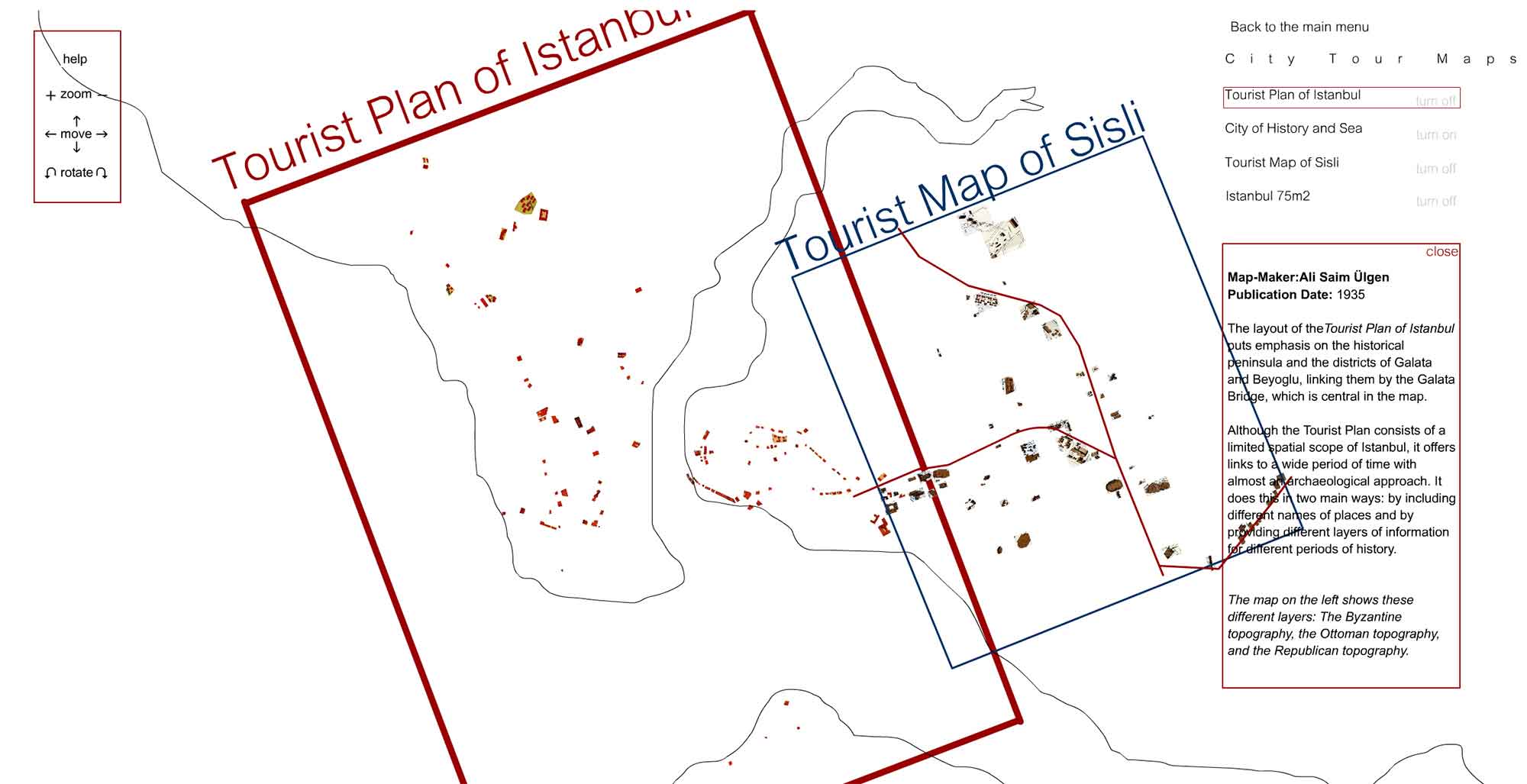- Login
Critical Spatial Practice






Critical topographical practices suggest an understanding of topography that is more performative than representational; because, performance rejects the reproduction of ‘certain’ knowledge and suggests that knowledge depends on viewers’ personal engagements, meanings and associations. As such, topographical practices may produce multiple embodied and situated knowledges.
This thesis explores how topographical theories and practices can unfix place with specific reference to selected contemporary maps, documentary films and guidebooks of Istanbul. I identify how the term topography has been used to date in architectural theory and geography, and define instead a newly emerging form of topography, which unfixes rather than fixes place. Drawing on contemporary feminist and poststructuralist theories of travel and representation, I critique traditional surveying methods as inadequate since they assume stable and single positions of knowledge in relation to place. I argue instead that the critical topographical practices suggest an understanding of topography that is more performative than representational; because, performance rejects the reproduction of certain knowledge and suggests that knowledge depends on viewers’ personal engagements, meanings and associations. As such, topographical practices may produce multiple embodied and situated knowledges.
I intend to make an original contribution to the knowledge and understanding of topographical theory and practice in relation to contemporary Istanbul in four ways. First, I use feminist and poststructuralist theories to explore how contemporary maps, guidebooks and documentary films perform rather than represent Istanbul as place – as unfixed, multiple and hybrid. Second, I rethink these often generic theories in relation to the particular topographic practices that map urban space, specifically Istanbul. Third, I critique the conventional understanding of topography as site in architectural theory and recast topography as both site and more importantly practice. Fourth, I propose a critical topographical practice in the form of a digital mapping, which explores and critiques the maps, guidebooks, and documentary films which are also explored in the text.
A parallel critical topographical practice, which is called Topographies of Istanbul, addresses fixing and unfixing of place while mapping a viewing of certain documentary films, a reading of certain guidebooks, and a use of certain maps of Istanbul. It includes, on the one hand, the mapping of the dominant knowledges of place in the traditional topographical practices I study, and on the other, the unfixing of place in those traditional practices through my partial, fragmentary, and individual mapping, which also brings out the repressed and resistant knowledges in traditional practices.
Since the completion of my thesis, my project has evolved into a practice of critical teaching and collaborative work. My theoretical research continues in parallel to my elective course called Topographical Practices and Collective Imaginations which is an architectural design studio I founded at Istanbul Technical University Faculty of Architecture, together with workshops I organize independently or within experimental educational institutions. These practices of teaching allow me to critique the ways in which knowledge of place is fixed through architectural design education and propose instead a continuous production of knowledge through a situated practice of mapping and a dynamic architecture which itself is a mapping of continuous changes of relationships at a place, architect’s perpetual and collective involvement being one of them.
Aslihan Senel is Associate Professor of Architecture at Istanbul Technical University. She obtained a bachelors degree and an MSc in architecture from ITU and a PhD in history and theory of architecture from the Bartlett School of Architecture, UCL in 2008. She currently runs an architectural design studio entitled collective imaginations and an elective course called topographical practices, both which brings together her academic research and her practice on experimental pedagogies. She has contributed to publications such as Performative Urbanism: Generating and Designing Urban Space (Jovis, 2015), The Politics of Making (Routledge, 2007), disClosure: A Journal of Social Theory (April 2014), and Writingplace Journal (nai0I0publishers, 2018) with her research on critical mapping, embodied knowledges, performative theories, and urban and architectural representation. Exploring the same topics through making, she has co-organized many international workshops, the last of which is a school of unknowables in the framework of 4th Istanbul Design Biennial.
A blog that collects the works of the author on the performativity of mapping:
https://performativemappingproject.wordpress.com
A blog that gathers works of a school of unknowables in the framework of 4th Istanbul Design Biennial (2018):
Jane Rendell distinguishes between spatial practices and critical spatial practices by pointing out to their respective descriptive and transformative approaches. My definition of traditional topographical practices and critical topographical practices is derived from Rendell’s distinction. Critical topographical practices refer to practices that regard place as multiple, subjective and open, whereas traditional topographical practices seek to define place as a determinable and quantitatively fixed whole, which indicates a closed system and certain set of elements located within this. This definition sets out rules of engagement, which position the surveyor and the viewer outside the place, looking at it from a fixed and often dominating point of view. Critical topographical practices, on the other hand, offer an ‘experimentation’, rather than an ‘imitation’ of a place that performs a place rather than reproduces it.
Jane Rendell, Art and Architecture: A Place Between (London: I.B. Tauris, 2006)
Kathy Prendergast, Lost (1999)
Roni Horn, Another Water (The River Thames, For Example) (Zurich: Scalo, 2000)
Attached are two articles I have recently published:
“Travelling through Guidebooks: Reading and Remembering Imagined Topographies of Nicosia,” Writingplace, Journal for Architecture and Literature, Issue #2 Inscription: Tracing Place, History and Memory in Architectural and Literary Practice (Rotterdam: nai0I0publishers, 2018).
“Still walking through h or engagements of an architectural educator,” This is a translation of the Turkish version that is published in Betonart, Issue #59 Diagram, (Istanbul: Binat, November 2018).
The digital mapping is at the link below:
https://web.itu.edu.tr/~senelas/work.html



































































